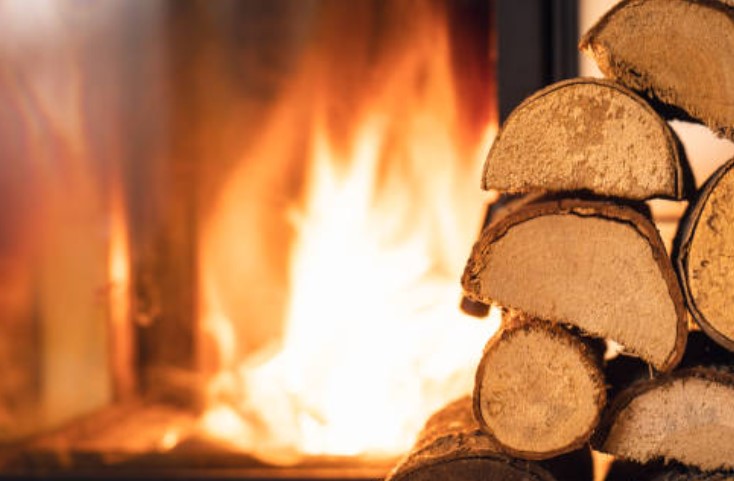
When it comes to outdoor gatherings, the flickering glow of a bonfire adds warmth and ambiance. However, the environmental impact of traditional bonfires often goes unnoticed. The source of your firewood plays a crucial role in determining the ecological footprint of your bonfire nights. In this context, the choice of a responsible firewood supplier can make a significant difference.
Flamig Farm is a supplier of various earth products including sustainable firewood. Choosing the right firewood supplier is essential to have responsible bonfire nights. Sustainable firewood refers to wood that is sourced and harvested in an environmentally responsible manner, prioritizing the long-term health of forests and ecosystems.
The Impact of Traditional Bonfires
Traditional bonfires, while enjoyable, can contribute to deforestation and air pollution. The use of non-sustainable firewood, often harvested without consideration for reforestation, can lead to habitat loss and disrupt ecosystems. Additionally, the smoke generated from burning certain types of wood releases harmful pollutants into the air, contributing to air quality issues.
The Role of the Right Firewood
Selecting the right firewood is key to hosting eco-friendly bonfires. Sustainable firewood options are those that come from responsibly managed forests, ensuring that trees are replanted to maintain ecological balance. Choosing such firewood not only supports environmental conservation but also promotes the health of the forests that contribute to our planet’s well-being.
Sustainable Firewood Options
- Hardwoods: Hardwoods such as oak, maple, and hickory are excellent choices for sustainable firewood. They burn more efficiently, producing less smoke and providing a longer-lasting fire. Additionally, these hardwoods are often sourced from well-managed forests, promoting environmental stewardship.
- Fruitwood: The wood from fruit trees like apple and cherry is another eco-friendly option. Fruitwood produces a pleasant aroma when burned, enhancing the overall experience of your bonfire. Ensure that the fruitwood you choose is sourced responsibly for maximum environmental benefit.
- Bamboo: As a rapidly renewable resource, bamboo is a unique and sustainable alternative to traditional firewood. Its fast growth makes it an environmentally friendly choice, and it burns cleanly, minimizing the emission of harmful substances into the air.
- Recycled Wood Products: Consider using recycled wood products, such as compressed sawdust logs or wood pellets. These materials are often made from wood waste, reducing the demand for freshly harvested timber and promoting a circular economy.
Benefits of Sustainable Firewood
- Reduced Carbon Footprint: Opting for sustainable firewood helps mitigate carbon emissions. Responsible forestry practices involve planting new trees, which absorb carbon dioxide and contribute to carbon sequestration.
- Preservation of Biodiversity: Sustainable firewood harvesting methods prioritize the preservation of natural habitats. This, in turn, helps protect the diverse plant and animal species that rely on healthy ecosystems.
- Support for Local Economies: Choosing a local firewood supplier that follows sustainable practices contributes to the well-being of local communities. Supporting local businesses helps create a more resilient and sustainable economy.
Tips for Minimizing Environmental Impact
- Choose Local Suppliers: Selecting a local firewood supplier not only reduces transportation-related emissions but also supports nearby communities. Local suppliers are often more attuned to sustainable practices that benefit the environment.
- Verify Sustainability Practices: Before purchasing firewood, inquire about the supplier’s sustainability practices. Responsible suppliers will be transparent about their sourcing methods and may even carry certifications that verify their commitment to environmental stewardship.
- Use Efficient Burning Techniques: Proper fire management techniques, such as using a well-constructed fire pit and allowing wood to season properly, can maximize the efficiency of the burn. This means less smoke, less waste, and a more eco-friendly bonfire experience.
- Limit Bonfire Frequency: While bonfires are a delightful way to spend evenings, consider limiting their frequency. This allows ecosystems to recover, reduces the demand for firewood, and minimizes your overall environmental impact.
READ ALSO: How to Help the Environment when You Bulk Buy?
Conclusion
In the quest for sustainable living, even our recreational activities can play a role. By choosing eco-friendly firewood and being mindful of our bonfire practices, we can enjoy outdoor gatherings while minimizing our environmental footprint. Remember, the simple act of selecting a responsible firewood supplier can contribute to a greener and healthier planet.